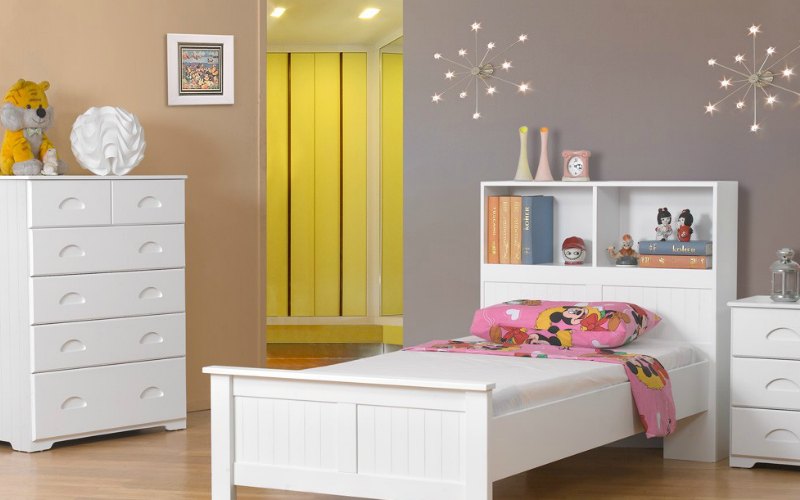
Minimalism and Raising Kids
You’ve seen the benefits of minimalism so now you’re wondering: What happens if kids have less stuff too? Pretty good things, actually.
Less stuff means more time for family. Less stuff means more time for fun. The whole point of minimalism is: Less means more. So you do you get there with kids?
In this article, we’ll show you some tips and ideas for helping your kids go minimalist. We’ll get into how to keep up with your minimalist choices as well as how to handle friends that haven’t gone minimal (yet).
What does minimalism look like for a kid?
Clutter
Instead of walking into a room crowded to the corners with toys and games — some of them broken, a few with missing parts — your child could walk into a room with wide open space, a set of his absolute favorite toys ready and waiting to be played with.
Shopping
Instead of shopping trips turning into acquisition missions, with mildly interesting and “good enough” and “why not?” toys making their way into the basket, shopping becomes a treasure hunt. You child looks for just the right toy, with just the right features, a toy that she decided on beforehand, that she’s been anticipating. A toy that comes home and gets the focus and attention it deserves, since it was really wanted.
Boredom
Instead of hearing the words, “I’m bored,” you may very well hear nothing as your child’s room becomes a clean, inviting place where he actually wants to hang out. His imagination and a few choice toys keep him entertained and deep in play.
Experiences
Instead of buying more toys, spending money and being surrounded by stuff, your family does simple activities together. As simple as taking a walk or cooking together. As easy as a game of catch in the yard or just hanging out on the porch.
Really?
If all of that sounds a little idealistic and far out of reach, don’t worry. Minimalism isn’t about living in a perfect, harmonious world “someday”. It’s about doing little things today. It’s working towards having less to weigh you down. It’s about clearing out stuff so you can enjoy your home, your family and your life in the moment.
How to get started
When you’re ready to get your kids on board with this whole minimalism thing, there’s one important place to start:
Yourself
It makes sense: we can’t ask our kids to do something we haven’t done yet. But on top of that, becoming minimalist is a sort of journey. And it picks up steam as you go. After you’ve gone through the steps of paring down your belongings, of adjusting to living with less, you’ll have a lot to say about it. You’ll be able to tell your kids how it frees up your time, how it feels better when you know just what you own and where it is.
Also, they’ll see what you’re doing. Talk to them about what you’re doing and why. Let them watch the process and when it comes time to talk to them about joining in, they’ll already have an idea of what to expect (and what to look forward to).
When it’s time for the talk
When you’re ready to introduce the idea of minimalism to your kids, chances are they’ll be more ready because they saw you do it. Here’s your chance to really explain the idea of minimalism and what it means to you. Tell them the goal you want your family to work towards.
Focus on the positives: spending more time together, living in a more organized house, actually enjoying the things you own, doing activities instead of accumulating junk. Let them know it’s a process that you’ll all work on together and that their input matters.
Include them
No one would appreciate coming home and finding half of their belongings gone. When it’s time to go through your kid’s toys and belongings let him be an active participant.
Start simple
Begin with the toys or games that are broken, missing parts or are hiding in the back of the closet gathering dust. Those are easy to get rid of and everyone will feel the process beginning.
For some kids, it’ll all make sense and paring down to the group of toys and belongings that they truly love will be easy. For others, this might come harder. If that’s the case, ask your child to start with one box to fill with items to be donated. After one box, the accomplishment of paring down might catch on. If not…
Be flexible
If your child turns out to be pretty resistant to the change, talk to him about his concerns. It doesn’t do any good to force a lifestyle choice that’s supposed to make everything easier. With kids, forcing rarely leads to easy. Talk to him about his reluctance. Ask what it’s about, what his concerns are. Addressing those concerns together will go a long way towards getting him ready to get on board with giving minimalism a try.
Keep it up
So once you get your kids to pare down their things, once you’re experiencing the ease that having fewer things brings, it’s important to maintain. It’s not hard to get right back where you started, swimming in things you don’t need. The main place that happens is at the store. So you’ll…
Shop differently
Kids grow, school projects arise, toys are outgrown. You will still have to buy things. The difference is how.
Do you need it?
Here’s a way to make sure stuff you don’t need never makes it into your house. When you find something that you think the family needs, put it down on a list. Add to the list as you think of things or as your kids make requests.
Then, let the list sit. Give it at least a week and then double check. Do you still need those things? Does that stuff still seem important? Ask your kids about the items they added. Still must haves? If not, cross them off. If so, let them stay.
When you go to the store, bring your list. Try to buy only what’s on it. If the kids come, make shopping less of a browse and more of a targeted strike. If they’re old enough, send them off to get things on the list. The goal is to get the items and get out as fast as humanly possible.
If anyone sees something while shopping that catches their eye, instead of buying it, add it to the list. Give it the one week (or longer) test period, then see if it’s still needed… and so on.
When shopping becomes less of a habitual thing, and more of a planned, thought-out experience, the belongings that you and your kids acquire will become that much more important and valued. And there will be much less of it.
So, your kid’s on board. But the neighbor kid is not.
Not everyone is a minimalist. After your kid has gone through the work of paring down and is starting to enjoy living with less, inevitably he’ll go to a friend’s house with wall-to-wall toys and games. This may be something he enjoys when he’s there and easily leaves behind. Or not.
The best way of dealing with a little possessions envy is to talk about it with him. Go over again the reasons why your family became minimalist. Point out the benefits. The extra time you spend together, the activities you do together and the money the family saves by not buying so many things. Make sure to ask what he thinks about his friend’s excess stuff compared to his own. Keeping the lines of communication open is the best way to keep everyone on the same wavelength.
The important thing is to start
Clearing out your home to make room for your family (physically and metaphorically) feels great. Getting your kids on board may take a little discussion and a lot of living by example. The payoff will be worth it. The time you and your kids are not spending cleaning up, the money you’re not spending shopping, the openness you and your family feel when walking into a home that’s free of the baggage of extra stuff — all of this will go towards more time, more money and more openness you and your family will have for doing things together.















